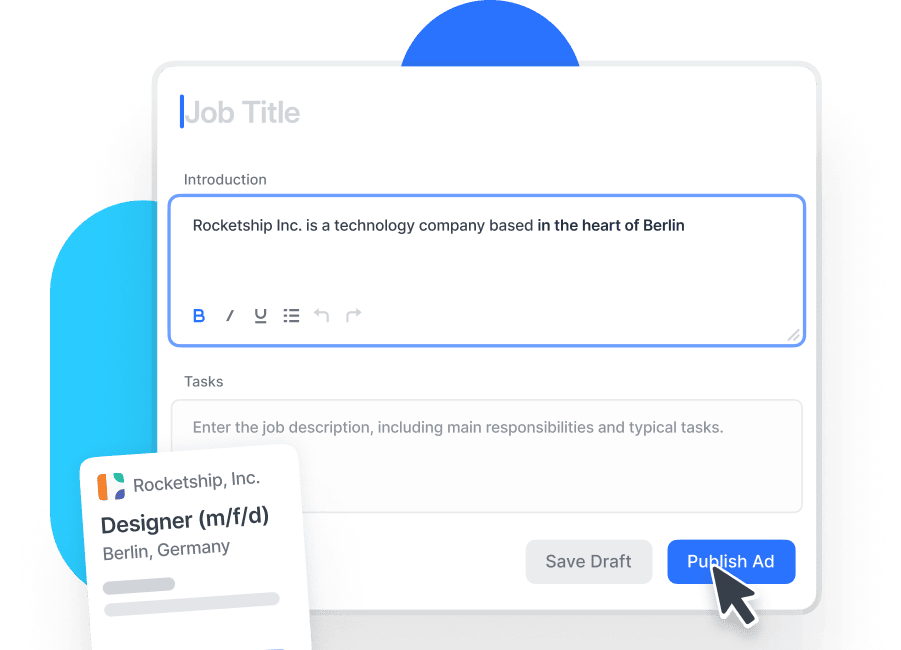Instead, the trend is developing towards completely contrarian lateral leadership – a more anti-authoritarian leadership culture that allows collaborating at eye level. But which of the two does it better? We have looked at both leadership cultures for you and present the advantages and disadvantages of each in this article.
Also check out: [QUIZ] What management style do you use?
- What is hierarchical leadership?
- What are the advantages of hierarchical leadership?
- What are the disadvantages of hierarchical leadership?
- What is lateral leadership?
- What are the advantages of lateral leadership?
- What are the disadvantages of lateral leadership?
What does hierarchical leadership mean?
Hierarchical leadership is a classic authoritarian leadership style from the genre of transactional leadership. Transactional leadership is strictly success- and performance-oriented and can be described as a purely functional relationship between employer and employee; the interests and ideas of the employees are irrelevant here because they have to fulfil a specific task in a prescribed manner. In hierarchical leadership, clear work instructions are communicated from the management level to the subordinate levels, and they must be complied with.
Managers within the hierarchical leadership model have disciplinary authority, control and regulate very tightly and, in the case of deviations or mistakes, take tough action and sanctions to ensure discipline. Good performance and high compliance are occasionally rewarded with incentives or bonuses (performance-related fringe benefits).
Advantages of hierarchical leadership
In hierarchical leadership, discipline and order reign, one might say. However, this form of leadership, which seems slightly antiquated nowadays, has stood the test of time mainly because of these advantages:
- Clear responsibilities, firm decision-makers
A big advantage of hierarchical leadership: responsibilities are crystal clear and offer no room for overstepping competencies or procrastination when it comes to decision-making. As a result, decisions are made more quickly and in a more targeted manner. - Clear instructions and standardised processes
Here, there is no “I don’t know how …”, because all processes are firmly prescribed and both managers and employees receive constant instructions on how their work is to be done. So everyone always knows what they have to do and how, and there are no false impressions or misunderstandings (theoretically). - Good check-ability
Where clear structures prevail, irregularities, deviations and errors are of course noticed extremely quickly and can thus be remedied more quickly – usually even before more serious damage occurs.
Overall, the exclusively hierarchical leadership style is indeed best suited when clear structures and quick decisions are strongly required – for example in conflict and crisis situations or phases of transition. Unfortunately, this is also very clearly reflected in the following disadvantages.
Disadvantages of hierarchical leadership
Vertical hierarchy thrives on looking down on parts of the workforce – unthinkable considering today’s demands for equality. Moreover, these possible disadvantages should also be taken into account when deciding on a practicable management style:
- Performance orientation
As mentioned above, hierarchical leadership focuses mainly on the performance and success of the company. There is simply no room for mistakes or grand gestures of humanity. - Extreme level of control and micromanagement
Where a lot of guidelines have to be adhered to, a lot has to be controlled. As a result, employees are generally given very little trust, but compliance is controlled and enforced by all means and employees are actively pressed into certain roles. - No right to co-determination
In a fixed hierarchy, it is the sole responsibility of managers to make decisions. The expression of opinions or other influence by employees is neither desired nor tolerated. There is no feedback culture in the workplace. - Great pressure on leaders
Management staff have a lot of authority to issue directives, but in return they alone must take responsibility for possible mistakes. This pressure on management personnel can quickly lead to overextension of them and, as a result, to serious misguided decisions, overworking, and burnout. - Poor error culture
Mistakes can quickly take on unpredictable proportions, especially in crisis and conflict situations. If employees make mistakes, no matter how small, or if their work results deviate from the specifications, this quickly leads to severe disciplinary measures. - No desire for individuality
If everything is predefined, everything has to fit and there are no deviations permitted, then there is no room for the free development of the individual. This is very demotivating for employees and quickly leads to resignation, resulting in high employee turnover. Accordingly, in hierarchical structures, there is usually a high fluctuation in the subordinate positions, which have to carry all management decisions without protest.
Hierarchical leadership still has its justification for existence due to its advantages, but it completely neglects the recognition, appreciation and motivation of employees and is therefore absolutely unsuitable as the primary leadership style according to today’s expectations in the working world. Is lateral leadership possibly better in all respects? Let’s take a look at that now.

What is lateral leadership?
Lateral leadership is probably the complete opposite of hierarchical leadership: Here, there is no longer a clear management level and no direct authority. Instead, this leadership style from the category of “transformational leadership” is based on the trust that employees will successfully complete jobs in their own individual way with a certain degree of personal responsibility and make a targeted contribution to achieving the company’s objectives. With this freedom for self-determination, employees should be allowed to develop freely. However, the lateral management style is by no means new; it was already spreading in organisations in a wide variety of sectors in the 1960s.
Leaders within lateral leadership are to be understood more as work coaches or mentors. They take the employees by the hand, influence, steer, and support team members in an inspiring and stimulating way — and should thus enable them to make autonomous decisions. Diligence is also emphasised here, but if a mistake is made, it is not punished but used for future learnings.
Management becomes Leadership
The term “manager” has now found its way into most job titles, and that makes sense: practically every team member takes responsibility for his or her own field and makes the manager in his or her original leadership position obsolete. Instead, the leadership or coaching within lateral leadership is usually taken over by the person with the greatest expertise and longest professional experience within a field.
But instead of saying “This is how it’s done and that’s it!” as the head of a department/team, the leader no longer intervenes top-down but from the side (lateral: Latin “latus” = sideways) and consequently meets his “subordinates” at eye level. This is precisely what makes the small but subtle difference between the formerly authoritarian manager and a lateral leader.
Advantages of lateral leadership
“Here I am Man, here dare it to be!” … The encounter at eye level and the opportunity for free development are essential for younger talents in particular to accept a job. Both are fundamental advantages of lateral leadership. But the list of advantages does not end there. These lateral leadership characteristics also have a very beneficial effect:
- Promoting open communication
If all employees are to make decisions on their own responsibility, seamless and comprehensive communication, as well as openly giving feedback, between the individual employees is indispensable. The lateral leadership style therefore promotes open communication at a level that many other leadership styles can only dream of. - More democratic decision-making processes
Today’s talents want to actively contribute to shaping a company. How would this be achieved better than by giving them the opportunity to participate in the decision-making processes within the company? - Better team spirit
For successful implementation of projects, everyone has to work together like clockwork. This inevitably welds employees together and promotes team spirit enormously. This results in a stronger company culture. - Freedom to develop
A huge bonus for employees: no one has to conform to predefined processes and ways of thinking that do not suit him/her. Instead, thanks to an appropriate portion of autonomy, everyone can demonstrate their abilities. This reduces the pressure to fit a mould and gives employees plenty of room to develop freely. - Stronger personal commitment by employees
Those who regularly receive appreciative advice and support in decision-making also identify more with their tasks, have more confidence in themselves and are significantly more committed to achieving the company’s objectives. - Individual promotion
In lateral leadership, each employee is picked up where he stands. Through the positive influence of the leaders (persons of trust with great expertise and excellent interpersonal skills), strong individual promotion is achieved. - Good error culture
Diligence is important and is constantly cultivated within the framework of coaching. Nevertheless: Making mistakes is something human. And humanity is celebrated in this style of leadership. Mistakes are therefore not punished, but handled as a learning factor. This thoroughly positive error culture can in turn have a positive effect on staff motivation.
Disadvantages of lateral leadership
With all the advantages that a lateral leadership style seems to offer, there are of course also shadow sides. And these should not be disregarded:
- Team motivation requires more effort
A successful lateral leadership concept requires a great deal of motivation and self-discipline on the part of the staff. In order to maintain both, an extremely large amount of time and energy must be invested in the motivation and enthusiasm of the team. If a leader does not steer, moderate and co-decide, everyone quickly thinks only of themselves and the team spirit is lost in no time. - High expectations on leaders
The leader has to control and steer a lot in his role as coach/mentor without turning into a supervisor. Without an extremely high degree of empathy, persuasiveness, negotiating skills and outstanding time management, this is hardly manageable. - Unclear decision-making paths
If every staff member has decision-making power, there is also the danger of “overlapping” decisions — or of a culture of decision avoidance when it is a matter of unpleasant or interdisciplinary decisions and several people are responsible anyway. This does not happen with a superior who has the authority to instruct. - Tasks cannot be delegated
If no one is directly authorised to give instructions, it can happen that a lot of work is left to individual employees, but almost none to others because they do not feel responsible. Delegating tasks is in fact not possible if there is no authorisation to delegate. This in turn can quickly lead to frustration and overworking. - Formation of a power vacuum
Humans need structures and a leader to look up to. This is anchored in the human psyche – as are some people’s tendencies to take on this leadership role. If there is a feeling in the team that they are not being sufficiently led and guided, a power vacuum will form over time. And it is only a matter of time before someone feels called upon to seize power. And that almost always results in tensions in the team instead of adequate leadership.
Note: These are possible disadvantages that can occur with exclusive use of lateral guidance. They do not always occur in exactly the same way. If the lateral leadership style is applied supplementarily and thus in a mixed form, the disadvantages mentioned can be effectively prevented.
Final overview
Classic control pyramid or stimulating mentoring, which one is better? Both approaches have their pros and cons. Basically, it is much more in line with today’s zeitgeist when managers and employees meet at eye level and no one is pressed into a mould. Personal development is important for a productive working relationship between company and employee. But it must also be moderated in an appropriate manner in order to be used in a goal-oriented way. And this requires suitable, sometimes slightly authoritarian structures with firm decision-makers and clear lines of command and communication. This is why most companies use lateral leadership only as a supplement to their main leadership style.
Ergo: Strictly hierarchical leadership is not recommended because it contains too many guidelines and control mechanisms, while lateral leadership can quickly become self-perpetuating. Therefore, a good mixture of both is recommendable. For example, the model of “flat hierarchies”, which combines the advantages of both worlds, has proven to be successful.
To learn more about leadership skills, also see our article on how empathetic leadership can benefit your organisation.




![[QUIZ] What management style do you use? Take our quiz to find out](https://storage.googleapis.com/join-public-pages-static-assets/2022/03/85fc6c53-smartworks-coworking-uz8thwpxwhi-unsplash_1920x1280-min.jpeg)